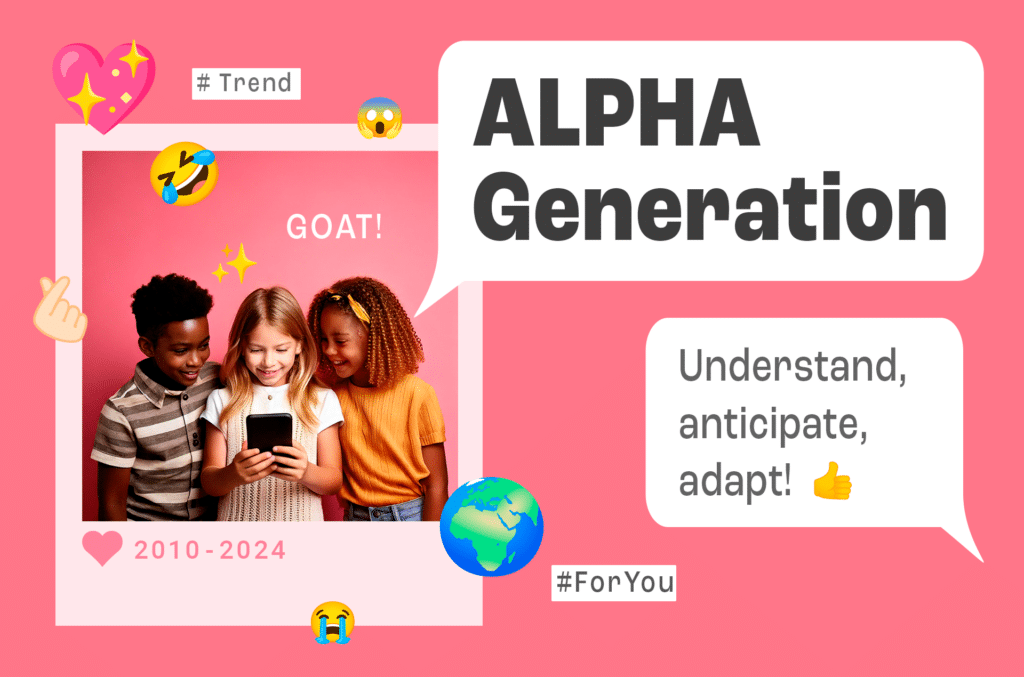Generation Alpha (born between 2010 and 2024) will be the largest generation, already numbering 2 billion, or 25% of the world’s population.
The Alpha generation stands out for its commitment to consumption, guided by values passed on by their Millennial parents, such as eco-consciousness, inclusivity and respect for each other’s mental health. Hyper-connected and over-solicited, this generation is difficult for brands to reach and seduce.
Here are a few innovation and packaging trends that connect with the Alpha generation:
1) PLAY WITH THE SENSES
With Generation Alpha, entertainment never stops. Ultra-connected, Alphas consume a constant stream of media where the boundaries between information and entertainment are blurred. Their relationship with consumer products is no different: the youngest seek playfulness and surprise at every turn, not hesitating to mix genres to create memorable, shareable experiences.
As a result, brands targeting Gen A need to constantly maintain their interest, by constantly offering new experiences. Take Oreo or Little Moons, for example, which regularly renew their offerings with surprising flavors and limited editions. In the United States, Kraft innovates with its “Flavour Boost” sachets – mixes to reinvent their traditional Mac & Cheese with original flavors such as butter chicken, poutine or cotton candy. These proposals appeal not only to Millennials, but also to their Alpha children, who are always on the lookout for something new.
For its part, Crayola has launched a range of chocolate powders inspired by the colors of its famous pastels. The story doesn’t say whether mixing red and blue powders really produces green chocolate..
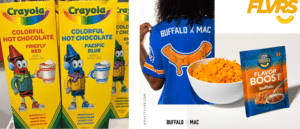
Crédit photo : Crayola
Packaging design plays an essential role in renewing the product experience. Shape, color and touch are all opportunities to establish a relationship with Alphas. In Brazil, for example, the L’Occitane brand has launched a children’s range with a playful design inspired by paint splatters. Called “Bagunça” (Portuguese for mess), the collection takes a child’s point of view and encourages them to enjoy every moment – even if it means making a mess.
Many brands targeting children and teenagers are also opting for colorful, exuberant – even regressive – designs to connect with the Alpha generation. Inspiring examples include Ever Eden and Wonderverse Labs, which rely on bold visuals and creative concepts to capture the attention of younger customers.
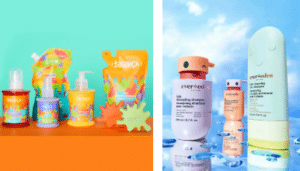
Crédit photo : Crayola
2) INTERACTIVITY AS A MEANS OF APPROPRIATION
In the age of algorithms and artificial intelligence, Alphas have grown up in a world that constantly adapts to their daily lives and desires. Products and services are no longer an end in themselves, but the starting point of a conversation between them and the brand.
Interactivity, personalization and gamification have become the key words for seducing this demanding generation.
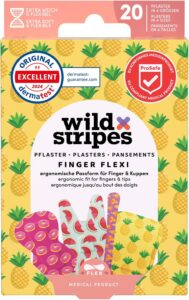
Crédit photo : Crayola
One example is Wild Stripes, a bandage brand offering a range decorated with eccentric motifs, enabling children and teenagers to transform their little boo-boos into veritable fashion accessories and self-expression.
For its part, Crocs UK has struck a chord by unveiling a collection of shoes and sandals in partnership with Minecraft. In addition to this range, the brand has launched accessories that let you personalize your Crocs to your heart’s content. And the experience doesn’t stop there: the adventure continues in the virtual universe. Players can display their Crocs in their Minecraft game, or scan their shoes via an app to take part in exclusive games.
Some brands, like L’Oréal, also rely on interactivity to engage the Alpha generation. Through original initiatives, whether to promote new products or highlight their CSR actions, L’Oréal has succeeded in turning this immersive approach into a real communication lever with the younger generation.
 Crédit photo : Crayola
Crédit photo : Crayola
3) KIDS NO MORE
Some time ago, we covered the “Nold” trend, marked by the desire of seniors to be seen as an active, dynamic target, the opposite of the traditional image of 3ᵉ age. Alphas follow a similar logic, adopting products traditionally associated with adults.
On TikTok, “Sephora Tweens”, aged between 6 and 12, are already sharing their skincare routines, sometimes using anti-aging products. Faced with this growing demand and the incompatibility of certain ingredients with children’s skin, brands such as Glow Recipe and Drunk Elephant have developed ranges specifically adapted to younger customers. These products feature playful designs, with bright colors and soft textures, creating a visually fun experience even in the bathroom.
Children and teenagers are looking for products that combine efficiency and aesthetics, transforming even everyday gestures into moments of pleasure.
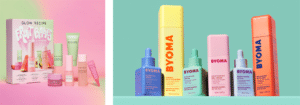
Crédit photo : Crayola
In the United States, Kiid Coffee offers a range of decaffeinated coffees specially designed for children. Enriched with prebiotic fibers, vitamins and no added sugar, this range enables Alphas to adopt a typically adult habit, but adapted to their lifestyle.
In France, the English Tea Shop brand has developed a range of teas for children, to be brewed in hot or cold water. This fun, accessible range has been designed to encourage younger children to drink more water.
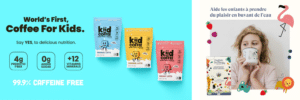 Crédit photo : Crayola
Crédit photo : Crayola
CONCLUSIONS
According to Hubspot, 84% of millennials don’t trust traditional advertising (radio, press, direct marketing, etc.). This finding will only grow stronger with subsequent generations.
As they become increasingly well-informed, Alphas will not be gullible to brand pitches.
Alphas want transparency, recommendations, but above all a good reason to buy a product or service: why your brand and not another? We’re no longer just buying a product, but the product’s perceived value and what it will make us appear to others. They will also be sensitive to the values conveyed by the company, notably environmental causes and animal protection.
The children of Generation Alpha will be “phygital” consumers, with one foot in the real and one in the virtual, while needing to be surrounded by their community and advised in their purchases.
Brands must redouble their creativity to maintain their connection with the Alpha generation. Fun, emotion and personalization will remain the essential pillars for designing innovations capable of seducing this demanding, ultra-connected new generation.
The challenge for brands will be to connect with Alphas, without appearing intrusive, while offering them an experience. This generation will be particularly sensitive to the values conveyed by brands, so they will be able to identify with them.
Would you like to know more? Contact Logic Design here.

